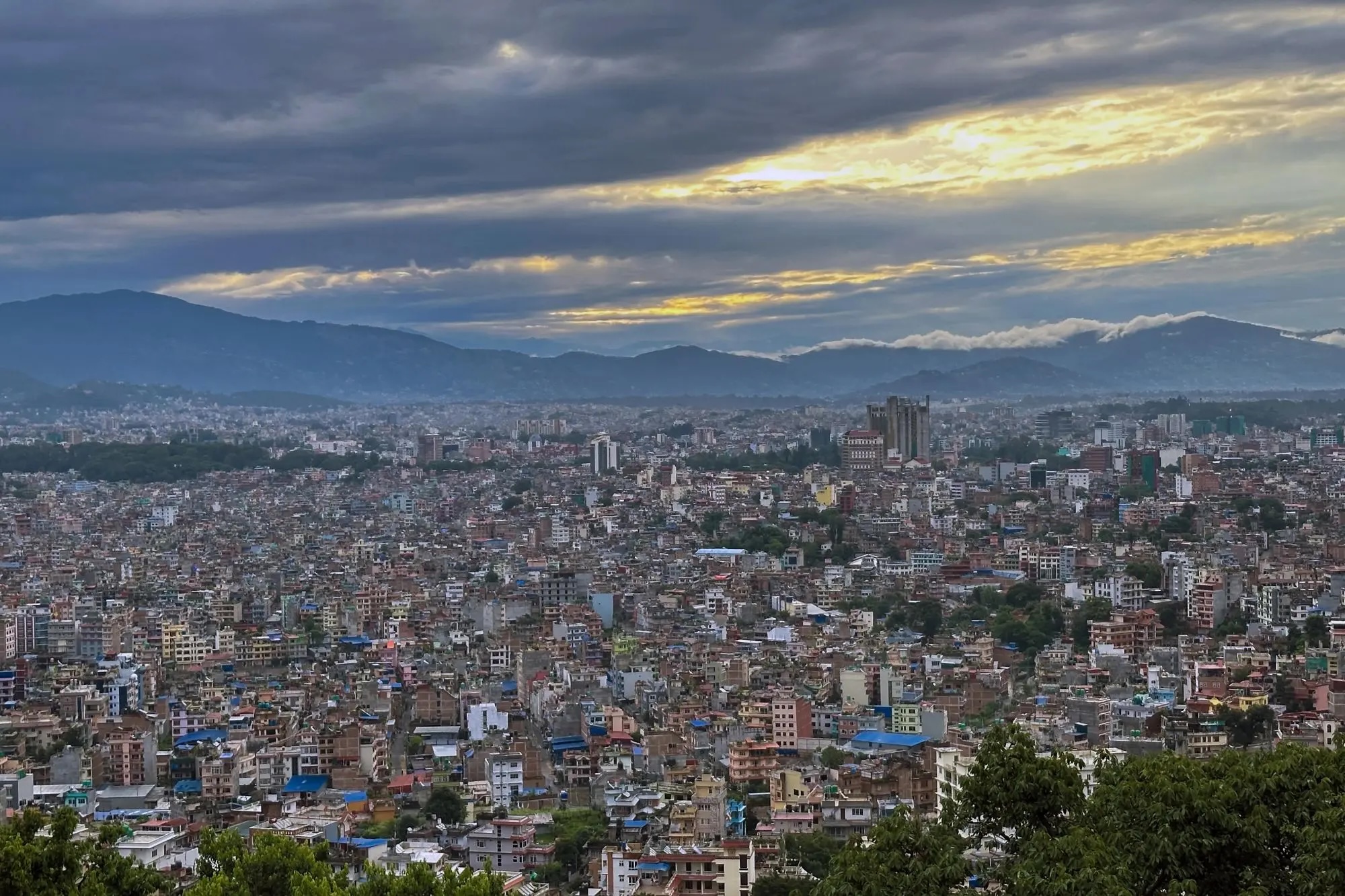By 2050, Kathmandu May Become Uninhabitable: Here’s Why

Kathmandu, the bustling heart of Nepal, faces a looming crisis—one deeply rooted in the accelerating impacts of climate change. Every year, the city contends with increasingly severe weather events, including heavy rainfall, floods, and landslides, disrupting daily life and making certain areas of the valley difficult to inhabit.
Scientific experts have raised alarm bells, warning that if the current trajectory of climate change persists, Kathmandu Valley could witness profound and potentially irreversible changes in the coming decades. The rise in temperatures, water scarcity, deteriorating air quality, and infrastructure degradation are converging to create a network of challenges for the city’s 1.5 million inhabitants. These issues are exacerbated by a lack of effective planning and mitigation efforts, painting a grim picture of Kathmandu's future.
Temperature Rise: A Key Factor
Global climate models predict that by 2050, South Asia, including Nepal, could experience temperature increases of up to 2°C to 3°C above pre-industrial levels. For a city like Kathmandu, nestled in a valley and already experiencing fluctuating temperatures, this increase could lead to significant environmental stress.
Higher temperatures will cause more frequent and prolonged heatwaves, making daily life in Kathmandu increasingly uncomfortable. These extreme temperature changes will place additional pressure on already stressed water and energy systems, with potential consequences for agriculture, public health, and the local economy.
Water Scarcity: A Growing Crisis
One of the most pressing concerns for Kathmandu’s future is the looming threat of water scarcity. The valley’s water supply, which is heavily reliant on both seasonal monsoon rains and snowmelt from the surrounding Himalayas, is already under strain. Scientists point out that as the planet warms, Himalayan glaciers are melting at an alarming rate. A 2019 study from the International Centre for Integrated Mountain Development (ICIMOD) found that up to 75% of the glaciers in the Himalayas could vanish by the end of the century if global warming continues unabated.
This accelerated glacier melt, while temporarily increasing water flow, will eventually lead to a drastic reduction in water availability for Kathmandu and other regions in Nepal. The city is likely to experience more erratic rainfall patterns, with long dry spells followed by intense and unpredictable monsoon rains. These changes could lead to water shortages during the dry season and an overabundance during the rainy season, causing more frequent floods.
Air Quality: A Worsening Health Crisis
Kathmandu’s air quality is another pressing issue that could make the city uninhabitable by 2050. Currently, the valley is notorious for its poor air quality, which is driven by factors such as vehicle emissions, construction dust, and industrial pollution. The geographic structure of Kathmandu Valley—surrounded by mountains—acts as a natural barrier that traps pollutants, causing severe smog, especially during the winter months.
With rising temperatures and the continued growth of the urban population, the air pollution problem is expected to worsen. A report by the World Health Organization (WHO) suggests that prolonged exposure to such air pollution increases the risk of respiratory and cardiovascular diseases. Kathmandu's residents are already facing higher incidences of chronic obstructive pulmonary disease (COPD), asthma, and other respiratory illnesses. If air quality continues to decline, the city could become hazardous for human habitation by mid-century.
Infrastructure Strain and Urbanization: A Recipe for Disaster
Kathmandu’s rapid urbanization over the last few decades has already pushed the city’s infrastructure to its limits. Roads, buildings, and public services are struggling to keep pace with the city’s growing population. Unregulated construction, particularly in areas prone to flooding and landslides, has exacerbated Kathmandu’s vulnerability to climate impacts. Poor urban planning and the lack of green spaces have reduced the city’s natural ability to absorb rainwater, increasing the frequency and severity of floods.
As climate change accelerates, these infrastructural challenges will only become more pronounced. The city’s drainage systems, already inadequate, are likely to be overwhelmed by more intense monsoon rains. Landslides, which have become increasingly common in the surrounding hills, may become even more frequent, cutting off vital transportation routes and endangering lives.
Climate Migration: A Potential Exodus?
Climate change-induced migration is a growing concern in many parts of the world, and Kathmandu may not be immune to this trend. With water shortages, rising temperatures, deteriorating air quality, and increasing natural disasters, life in Kathmandu could become so challenging that many residents may be forced to leave in search of more livable conditions.
Studies have shown that climate change is likely to lead to mass migrations, particularly from rural to urban areas or across national borders. For Kathmandu, this could mean both an influx of climate refugees from other parts of Nepal and an outflow of residents to less affected regions. Such migrations could further strain the city’s already overburdened infrastructure and resources, leading to social and economic instability.
Scientific Evidence: A Dire Future
Multiple scientific reports and climate models reinforce the idea that Kathmandu, like many other cities across South Asia, is on the frontlines of climate change. A report by the Intergovernmental Panel on Climate Change (IPCC) emphasizes that the Himalayan region, due to its sensitivity to temperature fluctuations, is one of the most vulnerable areas in the world. The rapid warming in this region is not only threatening water resources but also biodiversity, agriculture, and human livelihoods.
The Nepalese government, along with international organizations, has begun to acknowledge the severity of the situation. However, while policies and frameworks for climate adaptation exist, the implementation has been slow and often ineffective. Without immediate and robust action, the city could become increasingly unlivable in the coming decades.
What Can Be Done?
To avoid an uninhabitable future, Kathmandu must take swift and decisive actions to mitigate the effects of climate change. This includes investing in sustainable infrastructure, improving urban planning, and enhancing water management systems. Reforestation efforts in the surrounding hills could help reduce the risk of landslides and improve water retention, while stricter regulations on emissions and pollution could prevent further deterioration of air quality.
Moreover, raising public awareness about climate change and its impacts is crucial. Citizens must be encouraged to adopt sustainable practices, such as rainwater harvesting, energy conservation, and reducing waste. At the policy level, Nepal must continue to engage with international climate initiatives and seek financial and technical assistance to bolster its climate resilience.
Conclusion: A Race Against Time
By 2050, Kathmandu could become uninhabitable if current trends continue. The convergence of rising temperatures, water scarcity, worsening air quality, and infrastructure failure presents a formidable challenge for the city. However, this grim future is not inevitable. With proactive planning, investment in climate adaptation, and global cooperation, Kathmandu may yet avoid the worst impacts of climate change. But time is running out, and the actions taken in the next few years will determine whether Nepal’s capital will remain a viable place to live in the decades to come.

![From Kathmandu to the World: How Excel Students Are Winning Big [Admission Open]](https://nepalaaja.com/img/70194/medium/excel-college-info-eng-nep-2342.jpg)
